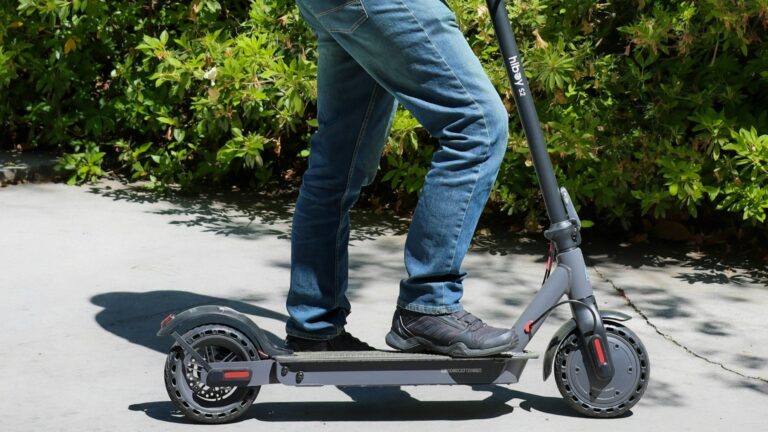Queensland recently has rolled out an innovative E-Mobility Rebate Scheme, aiming to make electric bikes (e-bikes) and e-scooters more accessible to its residents.
Starting from September 23, 2024, Queenslanders can now benefit from significant rebates when purchasing these electric alternatives to conventional transport.
By contrast, Victoria, particularly the city of Melbourne, recently decided to ban electric scooter rentals, sighting safety concerns, but effectively allowed a small percentage of bad actors to ruin an environmentally friendly transport method that could help congestion.
What’s on Offer?
- E-Bikes: Residents can claim a $500 rebate on the purchase of a new e-bike.
- E-Scooters: A $200 rebate is available for those buying a new e-scooter.
This initiative is part of Queensland’s broader Zero Emission Vehicle Strategy for 2022-2032, with a committed funding of $1 million, aimed at reducing the upfront cost barrier for consumers interested in greener transport options.
The move comes at a time when urban congestion, environmental concerns, and the push for active transport options are at an all-time high. E-bikes and e-scooters offer a solution that’s not only eco-friendly but also practical for Queensland’s climate and urban layout.
Transport Minister Bart Mellish highlighted how these modes of transport reduce both congestion and emissions, providing a convenient alternative in Queensland’s often warm weather.
Eligibility and How to Apply
To be eligible for a rebate under the Scheme, you must:
- purchase your new eligible e-bicycle or e-scooter from a Queensland retailer or Australian online business on or after 23 September 2024;
- be a person aged 18 years or over; and
- be a Queensland resident.
You are not eligible for a rebate if you are:
- a business (including sole traders, companies, consortiums or organisations)
- a person under 18 years of age
- a non-Queensland resident
- an applicant who have previously received assistance under the Scheme.
To apply for a rebate under the Scheme, complete and submit your application and supporting information via QRIDA’s online portal.
Applications remain open until available funding is exhausted. It is expected that funding will be exhausted quickly, rebate funding is not guaranteed at any stage of the application process.
To apply, please visit and ensure you read through the scheme’s guidelines PDF.
What devices are eligible?
For an e-bicycle or e-scooter to be eligible for a rebate under the Scheme, the device must:
- be new (e.g. has not been used or sold prior to purchase)
- comply with the definition of either an e-bicycle or e-scooter (see Section 12: of the Guidelines);
- be limited, by software or hardware, to a maximum speed of 25km/h under motorised power;
- include a battery management system; and
- be supplied with a charger that has the regulatory compliance mark and is registered on the Electrical Equipment Safety System national database.
Under the Scheme, an e-scooter must:
- be designed for use by one person;
- have one wheel at the front, and one or two wheels at the back, or, one or wheels at the front and one wheel at the back;
- be propelled by an electric motor that is not capable of operating when a device is going faster than 25km/h;
- be steered by handlebars;
- have a footboard supported by the wheels; and
- be no more than: 1,250mm in length, 700mm in width, 1,350mm in height and 60kg in mass (when not carrying a person or other load).
Under the Scheme, an e-bicycle must:
- be a power-assisted bicycle, that is:
- be fitted with one or more electric auxiliary motor/s with a maximum power output, or combined maximum power output of not more than 200 watts; and
- not be capable of travelling faster than:
- 6km/h when propelled only by the electric motor/s (no pedalling), or
- 25km/h while the motor/s are providing assistance (speeds in excess of 25km/h are only permitted under pedal power only), and
- not be fitted with an internal combustion engine; or
- be an electrically power-assisted cycle (EPAC) with a maximum continuous rated power of 250 watts, of which the output is:
- progressively reduced as the cycle’s travel speed increases above 6 km/h; and
- cut off, when:
- the cycle reaches a speed of 25 km/h; or
- the cyclist is not pedalling and the travel speed exceeds 6km/h
The Bigger Picture
This scheme not only supports individual consumers but also aligns with global trends towards reducing carbon footprints and enhancing urban livability. It follows Queensland’s previous success with electric vehicle rebates, showcasing the state’s commitment to a cleaner, more sustainable future in transport.
The response from the community and advocacy groups like Bicycle Queensland has been overwhelmingly positive, with many applauding the government’s decision to include e-mobility devices in their zero-emission strategy. Industry players are also gearing up, expecting a surge in demand as seen in posts across social platforms where Queenslanders are sharing excitement about the rebates.
Conclusion
Queensland’s E-Mobility Rebate Scheme represents a forward-thinking approach to transport, encouraging a shift towards more sustainable habits. As urban areas worldwide grapple with pollution and congestion, Queensland’s initiative might just set a precedent for others to follow. For Queenslanders, this is not just a rebate; it’s an investment in a cleaner, healthier, and more active future.
For more details or to start your rebate application, visit the QRIDA’s official program page. With the funding cap, now’s the time to consider making the switch to e-mobility.
For more information, head to Queensland Rural and Industry Development Authority.
